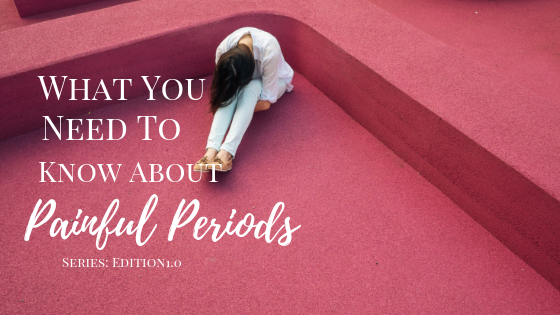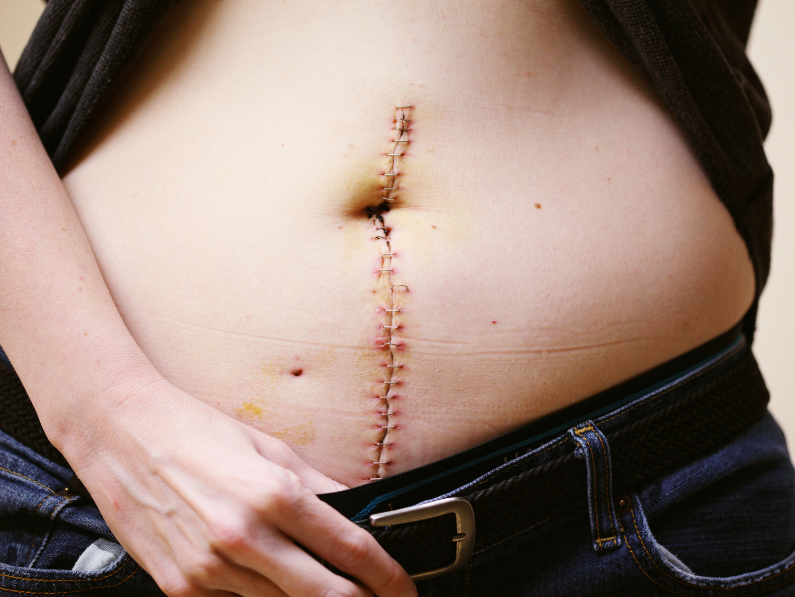Suffering from painful period cramps is an awkward and miserable experience. Trust me I know firsthand how killer period cramps can disrupt daily life. Yet, it wasn’t until my struggles with infertility and endometriosis that I began to understand more about the menstrual cycle, periods, and reproductive health as a whole. As a matter of fact, a majority of women lack proper awareness and understanding of how their bodies work. Be honest how well do you understand your reproductive system and how it’s supposed to properly function? And, mind you I’m not talking about myths or information you gleaned from a magazine. I’m talking about actual, functional, scientific knowledge of your fertility and menstrual health. Ponder this for a second.
Page Contents
Creating Painful Period Awareness
This lack of awareness makes it hard to identify when there are issues that are compromising your reproductive health. Therefore, making it increasingly difficult to properly diagnose conditions such as endometriosis, adenomyosis, ovarian cysts, or fibroids.
Hence why I’m writing this series. I want to share what I’ve learned on my reproductive health journey by sharing my discoveries about menstrual health and painful periods. So, let’s kickstart this series by discussing why period cramps happen and explain the difference between period pain and painful periods.
Why You Experience Period Cramps & Pain
Uterine contractions are what causes period cramps and discomfort during your cycle. This is primarily due to the release of hormone-like secretions known as prostaglandins. Prostaglandins are responsible for trigger the uterus to contract and shed the excess build-up of tissue on the uterine wall. Each woman will experience period cramps and period pain differently. It is common to experience mild to moderate discomfort on your period. But, this discomfort can usually be decreased by taking over the counter medication.
Whereas experiencing the symptoms listed below means you suffer from dysmenorrhea; which is the medical term used to describe painful periods.
- Killer period cramps
- Nausea
- Vomiting
- Diarrhea
- Fever, and
- Heavy bleeding
In addition to being unpleasant to deal with these symptoms also interfere with your ability to participate in your daily activities. You may miss work, or have to skip school because you’re not able to function. Also trying to find relief when it comes to decreasing your pain and discomfort is very difficult. Typically over the counter medications fail to suppress your pain or don’t work at all.

How Painful Periods Are Classified
In the medical world, there are two classifications that describe painful periods or dysmenorrhea. The first is primary dysmenorrhea and the second is secondary dysmenorrhea. Primary dysmenorrhea is when there is no underlying cause contributing to your painful periods. Whereas secondary dysmenorrhea means there is an underlying condition that is causing you to experience painful periods.
Painful Periods Caused by Primary Dysmenorrhea
Generally, painful periods are associated with being caused by an underlying condition. Yet, there are instances in which painful periods are not caused by an underlying condition. Do you remember when I mentioned earlier how prostaglandins were responsible for triggering uterine contractions? Well, when your body produces a high level of prostaglandins they can creep into the bloodstream. Consequently, this causes an inflammatory response in the body leading to nausea, vomiting, headaches, and diarrhea.
You may also notice that your cramps are more intense and can start before your period and reach peak intensity during the first 2-3 days of menstruation. Therefore, if you find that you are experiencing these symptoms it’s important for you to schedule an appointment with your OB/GYN and discuss what you’re experiencing. Doing so will ensure that you receive a proper diagnosis and underlying conditions are ruled out and appropriate treatments can be discussed.

Finding Relief for Killer Period Cramps
There are a variety of treatments that can help you overcome the discomfort you experience during menstruation. Whether you choose to focus on medical/pharmaceutical solutions, alternative medicine, or dietary/lifestyle modifications finding what works and helps you is the most important.
Birth Control Pills
For many women, hormonal birth control is beneficial at decreasing the pain they experience during their monthly cycle due to the controlled release of hormones. Discuss with your doctor what type of birth control pill would be the most beneficial for you according to your current state of health and lifestyle.
Prescription Medication
If birth control is not your thing looking into prescription level pain killers can help you manage the most painful days of your cycle. Speaking to your doctor about different options and what would work best for you can help you get back to functioning in your daily activities.
Lifestyle Modifications
Perhaps you want to focus on more natural methods of managing your painful periods. Working with a naturopathic doctor, wellness coach, or registered dietician can help you transition to an anti-inflammatory diet that can help with decreasing your period pain. Additionally, including acupuncture, chiropractic care, vaginal steaming, massage therapy, and functional exercise can help with alleviating pain naturally and improving your symptoms. Also including easy at-home pain management treatments such as aromatherapy, heat pads, and over the counter medication can also prove helpful.
You may also find it beneficial to integrate these different methods of care to achieve the best treatment plan and adequately manage your period pain. There are no right or wrong approaches. Working with your doctor and trying different methods until you determine what works best for you is best.
About the Author
 Hi, my name is Kathleen but you can call me Kat. I am an Esthetician, Lifestyle Wellness Coach, Content Creator, and Writer. My intention is to provide you with education and awareness about women’s health, nutrition, fitness, beauty, wellness, and lifestyle. I primarily help women that are seeking holistic and natural solutions to managing their chronic condition, improving their lifestyle and combating anti-aging concerns. I offer coaching programs and courses that are designed to help you redefine your health and defy aging. You can find my content on a variety of social media platforms such as YouTube, Facebook, and Instagram. If you take the opportunity to visit me on my other platforms don’t hesitate to leave a message, I would love to hear from you!
Hi, my name is Kathleen but you can call me Kat. I am an Esthetician, Lifestyle Wellness Coach, Content Creator, and Writer. My intention is to provide you with education and awareness about women’s health, nutrition, fitness, beauty, wellness, and lifestyle. I primarily help women that are seeking holistic and natural solutions to managing their chronic condition, improving their lifestyle and combating anti-aging concerns. I offer coaching programs and courses that are designed to help you redefine your health and defy aging. You can find my content on a variety of social media platforms such as YouTube, Facebook, and Instagram. If you take the opportunity to visit me on my other platforms don’t hesitate to leave a message, I would love to hear from you!






